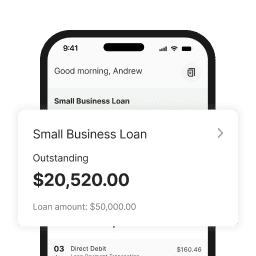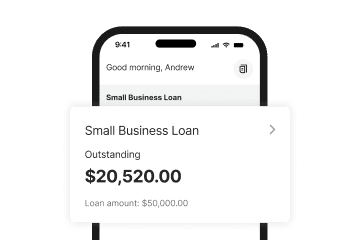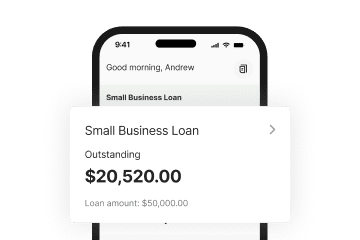At a glance
- EOFY brings a narrow window for business owners to decide whether acting now or waiting until July will deliver the greatest benefit.
- The key is to assess your timing, operational urgency, and whether a deduction now will actually reduce your taxable income.
- Making a well-timed decision can free up capital, reduce tax, and help set your business up for a stronger year ahead.
The end of the financial year is closing in, and you’re asking the question that doesn’t have a simple answer: Should I lock in that business loan now, or wait until July?
You’ve got a supplier offering a discount if you move fast. Your accountant is running projections. And in the back of your mind, you’re wondering whether that last-minute EOFY investment will help your tax position, or just strain your cash flow.
There’s no one-size-fits-all answer, but there are clear factors that can help you decide. It starts with understanding how the numbers stack up, and how quickly you can move when the timing is right.
Tax impact: Will a deduction this year actually help?
One of the biggest reasons small businesses consider borrowing before June 30 is the potential tax deduction. But the benefit depends entirely on your situation.
If you’re buying eligible equipment, tech or assets and settle before EOFY, you may be able to deduct the full or partial cost in this financial year. That can reduce your taxable income, which is helpful if your profits have been strong. The key question is whether the deduction actually offsets the tax you owe now, or whether it would be more valuable next year, when your margins may be higher.
Instant asset write-off rules can change from year to year, so it’s worth checking the current threshold and eligibility with your accountant. If you’re cutting it close to June 30, make sure the asset will be used or installed ready for use before the deadline, or you may miss out.
For more details about the instant write off, see how to maximise your 2025 tax return with the right small business deductions. You can also check which business loan expenses are tax-deductible, including interest, fees, and other costs.
It’s not just income tax either. If you’re GST-registered, timing also affects when you can claim input tax credits. Buying before EOFY could bring a short-term GST benefit, but only if the purchase aligns with your BAS cycle and invoicing date.
How to make a decision: If the deduction makes a meaningful difference to your taxable income, go ahead. If not, you may be better off waiting and claiming the deduction in the following year when it counts more.
Cash flow: Can you support repayments in the new financial year?
A business loan can help you respond to opportunities fast, but it also adds a new outgoing. If you’re borrowing in the final weeks of June, your repayments are likely to start in July, just as the new financial year kicks off.
If you’ve got a healthy pipeline, solid receivables, and the loan is part of a bigger growth plan, that won’t be an issue. But if Q1 tends to be slow, or you’re already juggling BAS payments, super contributions or supplier invoices, those new repayments can add pressure quickly.
Being able to afford the business loan isn’t the only factor. What matters is how the repayments will fit into your cash flow without disrupting day-to-day operations. If the funds unlock working capital or support growth, the loan could actually strengthen your position. If it’s just filling a short-term gap with no clear return, it may leave you more exposed.
How to make a decision: Run your numbers, not just for this month but for the next three. Then ask yourself: what will your cash flow position look like once repayments start? Are you confident you’ll have room to move?
Urgency: Do you actually need to act now?
Sometimes the timing chooses you. Maybe a supplier is offering an EOFY discount. Maybe you’ve outgrown your current tools or space and need to move now to keep operations running. In those cases, delaying the loan could mean missing an opportunity or creating a bottleneck.
But not every purchase is urgent. If you’re still collecting quotes, unsure of the return, or just thinking about locking in a tax deduction, it’s worth pressing pause. Rushing into a business loan with no clear plan can eat into future flexibility, especially if cash is already tight.
The real question is whether the need is pressing, or simply convenient to address before EOFY.
How to make a decision: If there’s a clear operational reason to act now, such as a deadline, a growth window or a time-sensitive offer, moving before EOFY could make sense. If not, take the time to plan and revisit the loan once you’re ready.
Accountant advice: What does your adviser say about timing?
EOFY is one of the few times when the timing of a business loan can directly affect your tax outcome. That’s why your accountant’s advice carries more weight than usual.
If your adviser recommends making a purchase or taking out a business loan before June 30, it’s likely based on a broader view of your financials. They may be trying to reduce your taxable income this year, take advantage of a timing window for depreciation, or align your spending with known changes to tax policy.
On the other hand, they might suggest waiting. Maybe your income this year is already low, or your financials will look stronger next quarter. They may also be factoring in upcoming thresholds, grants or incentives.
How to make a decision: If your accountant supports borrowing now based on your current financials and plans, that’s a strong green light. If they recommend holding off, ask what they’re anticipating and how waiting could improve your position.
Your EOFY borrowing checklist
Not sure if you should borrow before or after June 30? Tick at least 3 boxes in one column to see which borrowing option may suit your business best.
| Borrow this financial year (before June 30) | Borrow next financial year (after July 1) |
|---|---|
Need funding before June 30? Here’s what to consider
If you’ve decided that borrowing before EOFY makes sense for your business, you want to act fast. Here’s what to look for in a loan you can actually get across the line in time:
- Fast approval: Opt for lenders with online applications and fast processing times. Some can approve loans in as little as one business day.
- Low-doc options: If your financials aren’t perfectly up to date, look for loans that accept alternative documentation or allow direct access to your business bank accounts for faster verification.
- No upfront security required: If you don’t want to use a personal or commercial asset as collateral, choose a lender that offers unsecured business loans.
- Funding flexibility: Choose a loan with a repayment schedule that matches your cash flow, especially if you’re heading into a quieter Q1.
Prospa is built for small businesses that need funding fast.
With Prospa, you get:
- A simple online application: Apply in under 10 minutes
- Minimal paperwork: You won’t need full financials to get started. Use your recent trading figures or connect your business account for quick verification
- Quick decisions, often within hours: If you apply during standard business hours and connect your business bank account for instant verification, you could receive a response and have funding in your account within the same business day
- No upfront security required upfront: Access up to $150K without putting up an asset
- No upfront credit checks: Find out if you’re eligible with zero impact on your credit score
- Funding between $5K to $1M: Suitable for everything from everyday cash flow needs to larger investments.
Ready to act? Talk to a Prospa specialist and make the most of the time left before EOFY.








